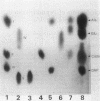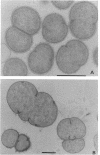Abstract
Veillonella alcalescens ATCC 17745, a strictly anaerobic, gram-negative small coccus, requires putrescine or cadaverine for growth (M. B. Ritchey, and E. A. Delwiche, J. Bacteriol. 124:1213-1219, 1975). Both putrescine and cadaverine were demonstrated to be incorporated exclusively into the peptidoglycan layer of V. alcalescens ATCC 17745. V. parvula GAI 0574 also proved to contain putrescine as a component of peptidoglycan. The primary chemical structure of the peptidoglycan common to the two Veillonella species is N-acetylglucosamine-N-acetylmuramic acid-L-alanine-D-glutamic acid gamma-meso-diaminopimelic acid-D-alanine. Putrescine or cadaverine links covalently to the alpha-carboxyl group of the D-glutamic acid residue of the peptidoglycan is necessary for normal cell growth. In V. alcalescens ATCC 17745, above 40% saturation at cadaverine linked to the alpha-carboxyl group of the D-glutamic acid residue of the peptidoglycan is necessary for normal growth.
Full text
PDF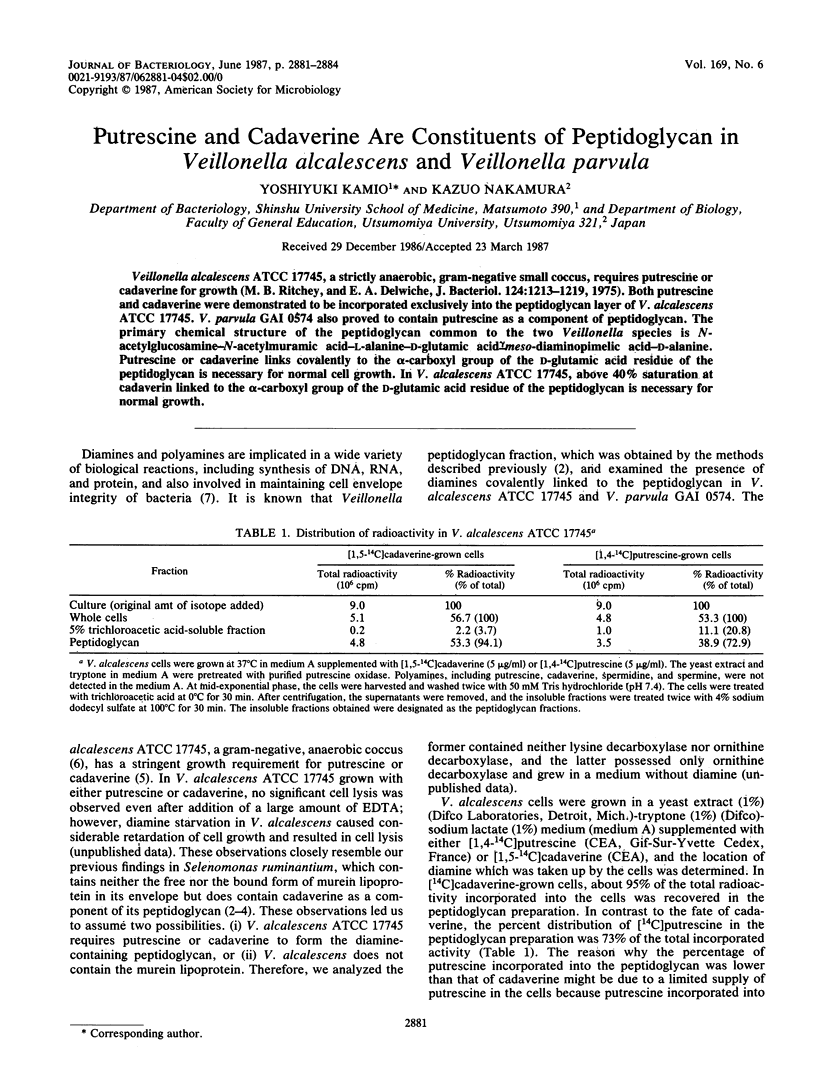
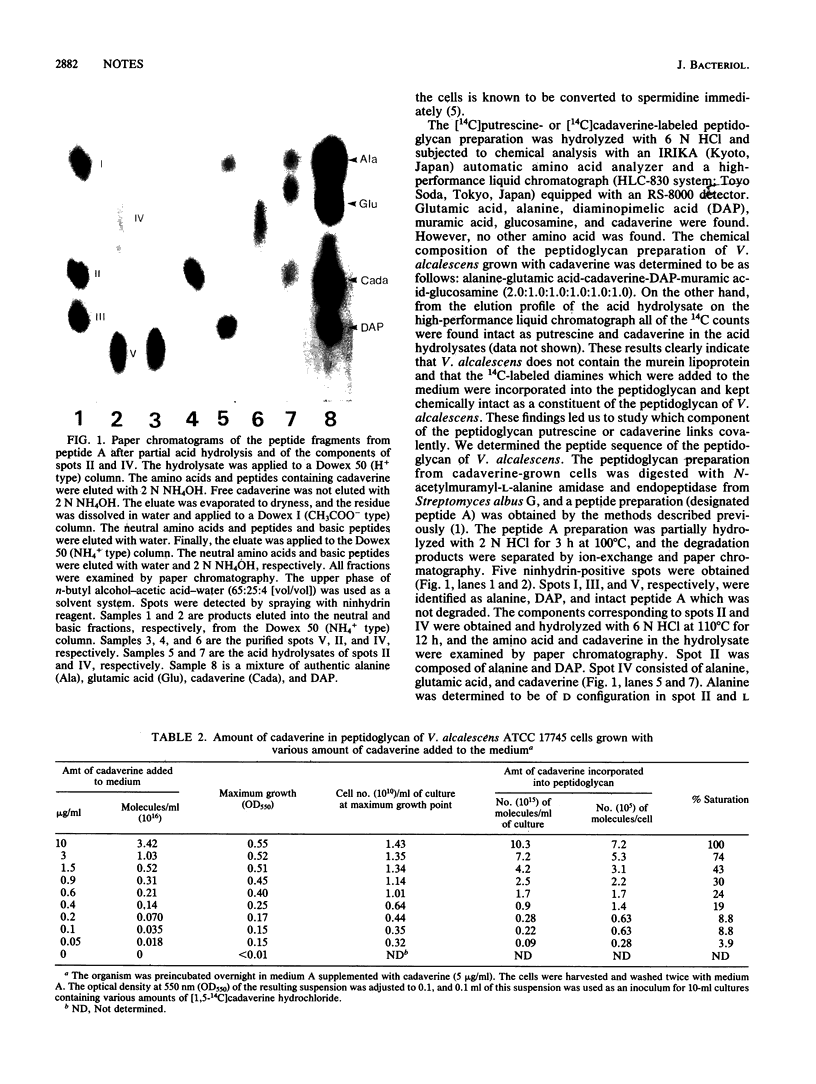
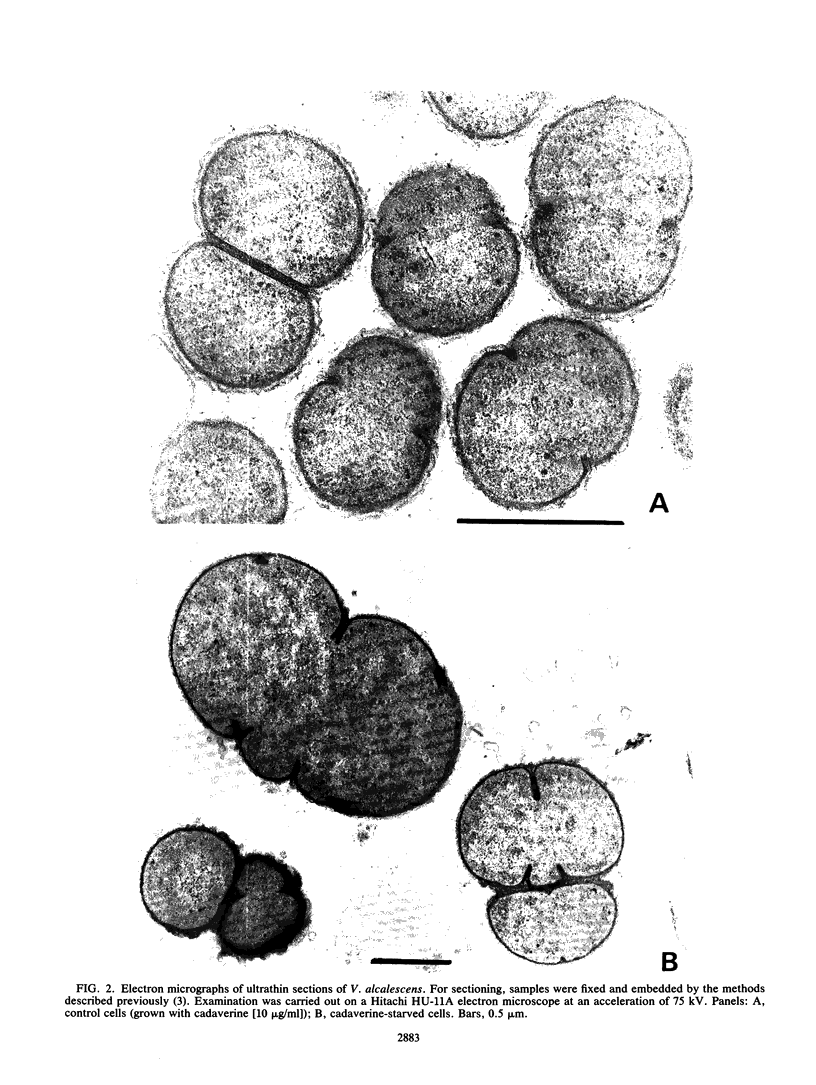
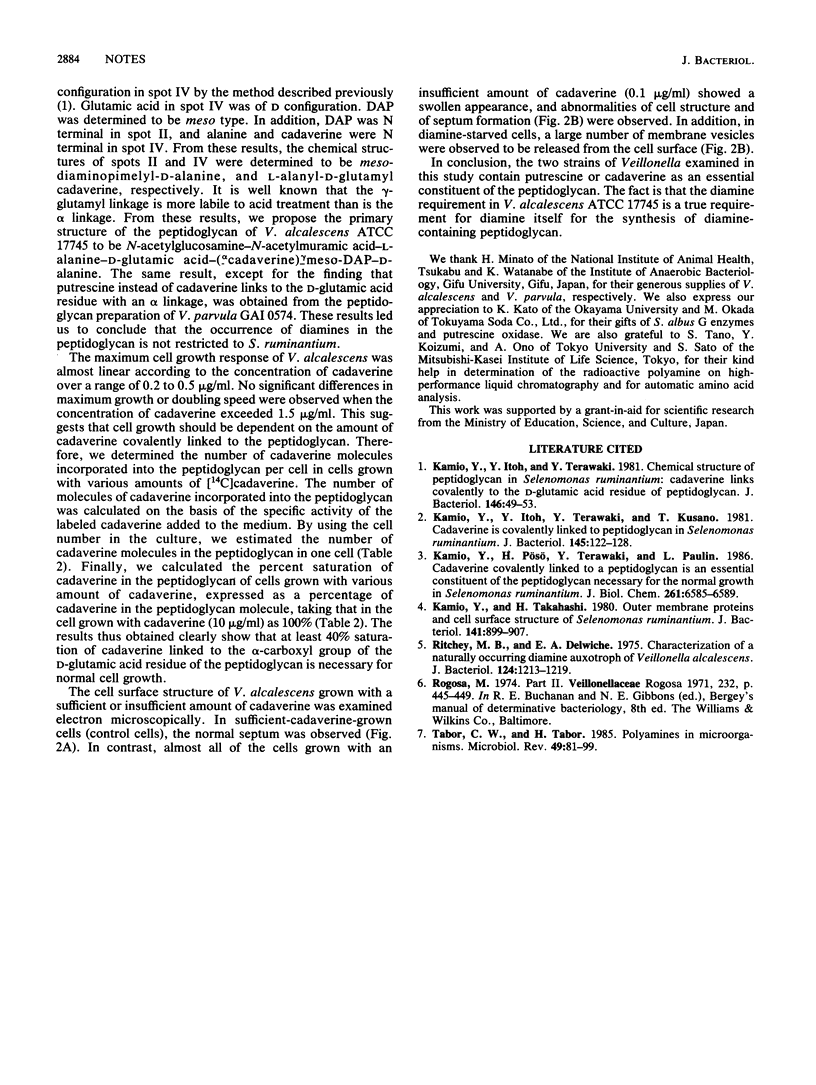
Images in this article
Selected References
These references are in PubMed. This may not be the complete list of references from this article.
- Kamio Y., Itoh Y., Terawaki Y. Chemical structure of peptidoglycan in Selenomonas ruminantium: cadaverine links covalently to the D-glutamic acid residue of peptidoglycan. J Bacteriol. 1981 Apr;146(1):49–53. doi: 10.1128/jb.146.1.49-53.1981. [DOI] [PMC free article] [PubMed] [Google Scholar]
- Kamio Y., Itoh Y., Terawaki Y., Kusano T. Cadaverine is covalently linked to peptidoglycan in Selenomonas ruminantium. J Bacteriol. 1981 Jan;145(1):122–128. doi: 10.1128/jb.145.1.122-128.1981. [DOI] [PMC free article] [PubMed] [Google Scholar]
- Kamio Y., Pösö H., Terawaki Y., Paulin L. Cadaverine covalently linked to a peptidoglycan is an essential constituent of the peptidoglycan necessary for the normal growth in Selenomonas ruminantium. J Biol Chem. 1986 May 15;261(14):6585–6589. [PubMed] [Google Scholar]
- Kamio Y., Takahashi H. Outer membrane proteins and cell surface structure of Selenomonas ruminantium. J Bacteriol. 1980 Feb;141(2):899–907. doi: 10.1128/jb.141.2.899-907.1980. [DOI] [PMC free article] [PubMed] [Google Scholar]
- Ritchey M. B., Delwiche E. A. Characterization of a naturally occurring diamine auxotroph of Veillonella alcalescens. J Bacteriol. 1975 Dec;124(3):1213–1219. doi: 10.1128/jb.124.3.1213-1219.1975. [DOI] [PMC free article] [PubMed] [Google Scholar]
- Tabor C. W., Tabor H. Polyamines in microorganisms. Microbiol Rev. 1985 Mar;49(1):81–99. doi: 10.1128/mr.49.1.81-99.1985. [DOI] [PMC free article] [PubMed] [Google Scholar]



